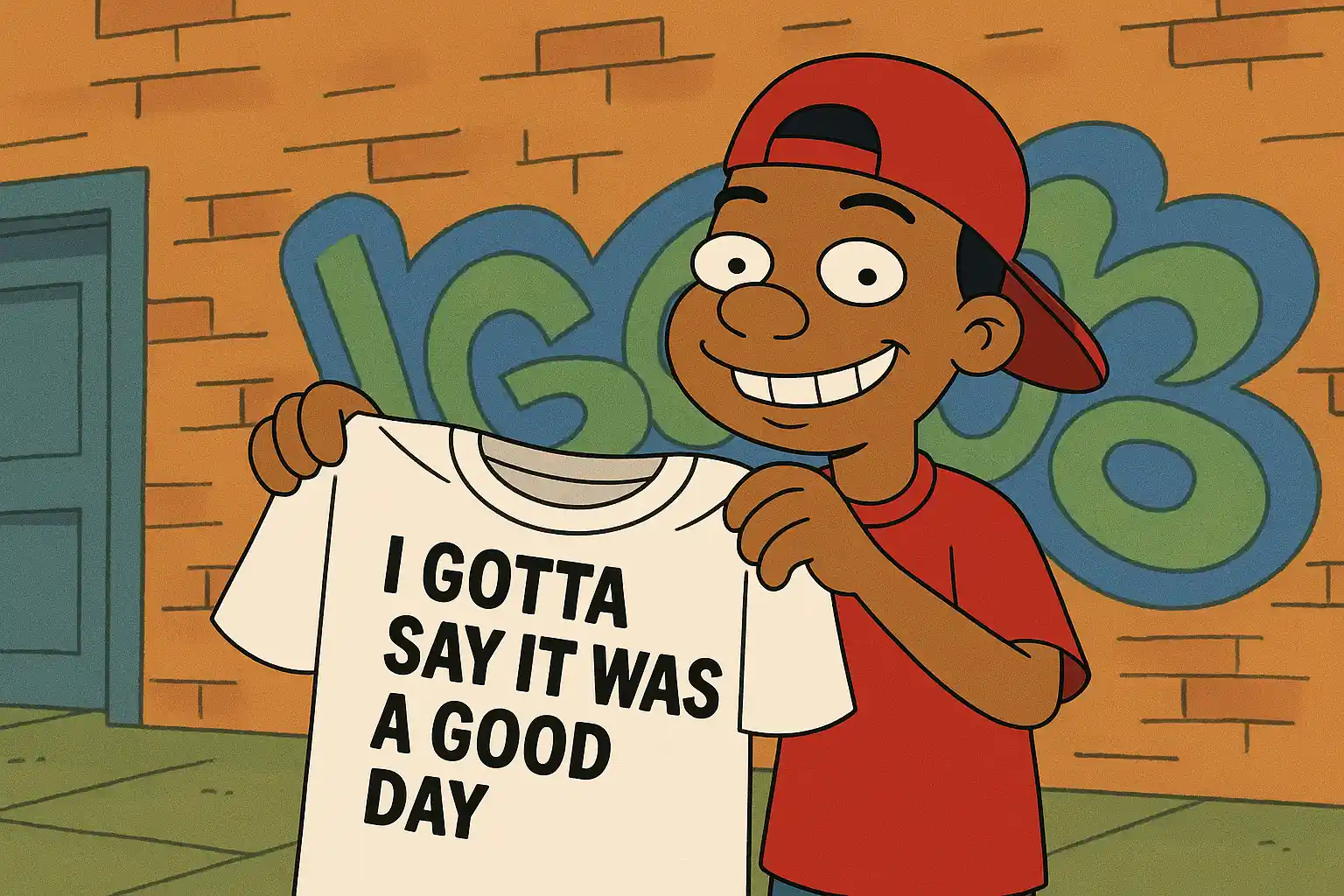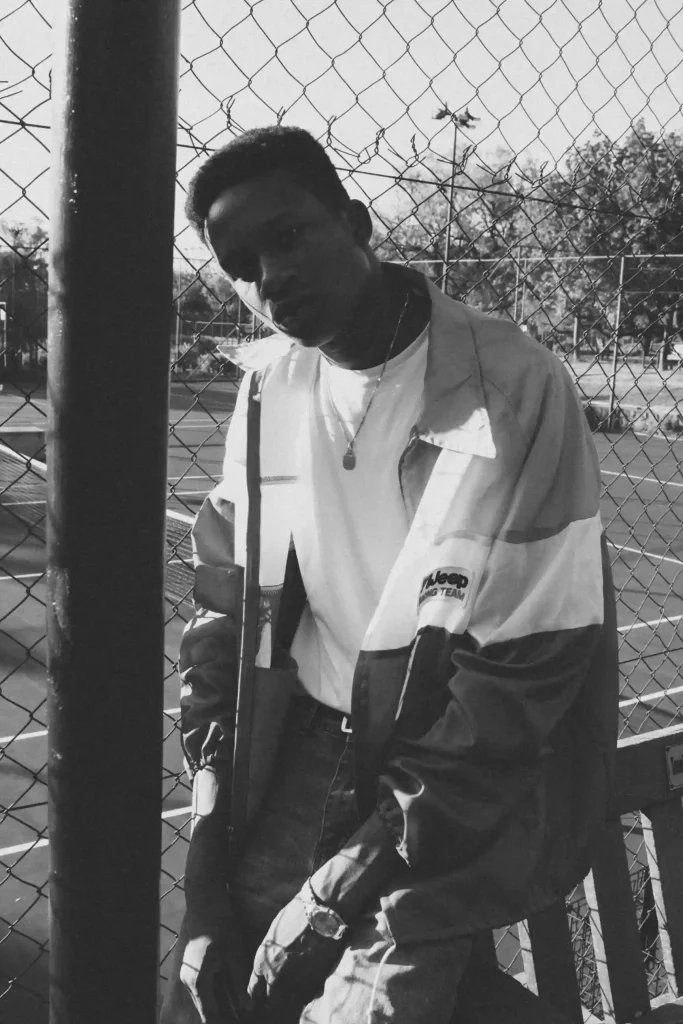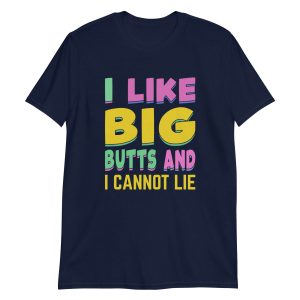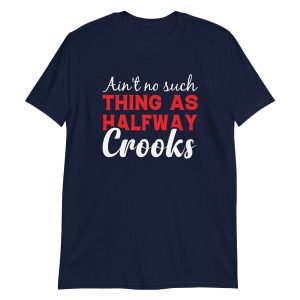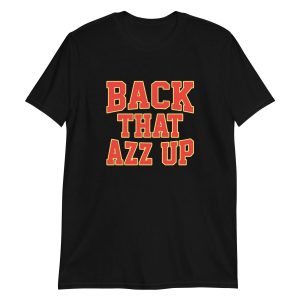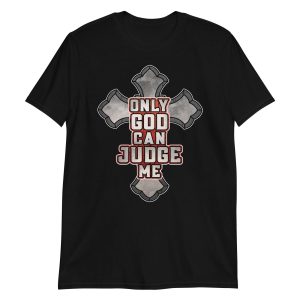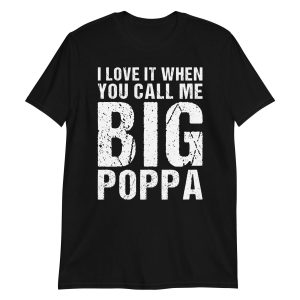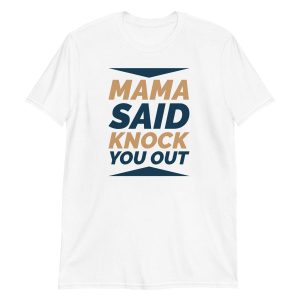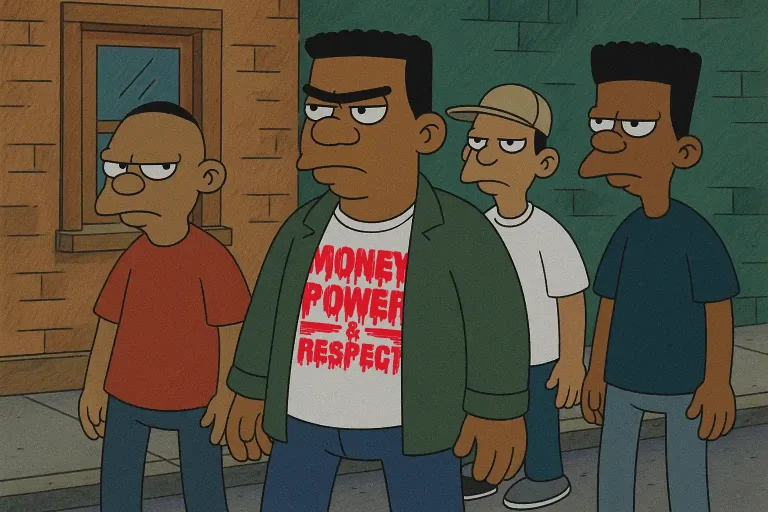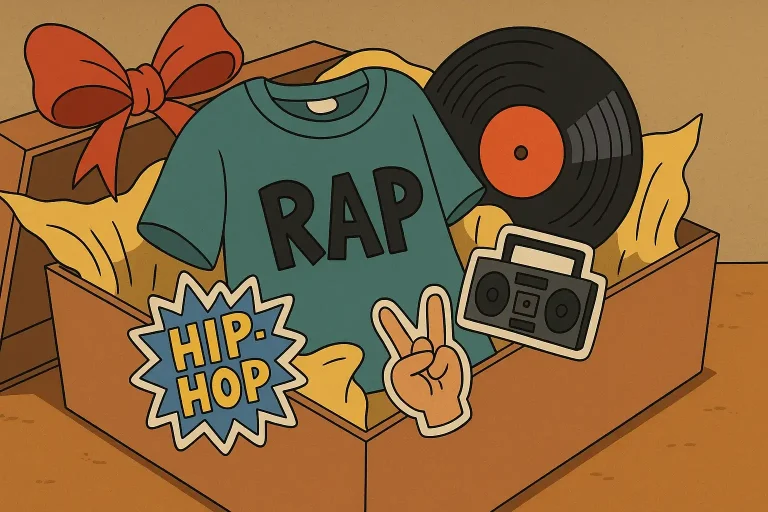Shop without borders - we offer worldwide shipping!
The Enduring Echo of the Golden Era
Ever wonder why certain phrases just stick with you, becoming more than words, but symbols of an entire era? For millions, that era is the 1990s, and those phrases are the unforgettable lyrics of rap. The 1990s are widely celebrated as the “Golden Age” of hip-hop, a transformative period characterized by immense creativity, innovation, and a profound cultural impact that took the genre to unprecedented heights. This decade saw rap music evolve into a mainstream powerhouse, diversifying its sound and audience, and leaving an indelible mark on global culture. It was a time when artists pushed boundaries, focusing on raw storytelling and skill, rather than just chasing fleeting trends.
Beyond the beats and flows, the lyrical genius of 90s rap transcends its original medium. The words themselves possess a unique depth, authenticity, and cultural resonance that makes them exceptionally well-suited for expression on apparel. This article will explore why rap lyrics on t-shirts serve as an ideal canvas for cultural expression, style, and personal identity. We’ll delve into the profound lyrical depth of the era, the seamless connection between these words and the iconic fashion trends of the time, the artistic power of typographical design, and the powerful resonance these quotes hold for fans.
This enduring appeal of 90s hip-hop for apparel is rooted in its lasting cultural significance. The consistent references to the 90s as a “golden age” and its “lasting impact” on music, fashion, and culture indicate a deep, sustained cultural relevance. This suggests that the demand for 90s hip-hop inspired apparel is not a temporary fad, but a stable, evergreen market driven by a target audience that views this era as historically significant and personally formative. The authentic and groundbreaking nature of 90s hip-hop directly led to its unprecedented cultural longevity and widespread influence. This enduring impact, in turn, fuels a consistent consumer desire for nostalgic and identity-affirming products, particularly rap lyrics on t-shirts, allowing brands like Trimnest, an e-commerce store specializing in culture-inspired t-shirts and hoodies with original typographical designs based on hip-hop lyrics and phrases, to build a loyal customer base around a timeless cultural phenomenon.
The Lyrical Landscape: Storytelling, Depth, and Raw Expression
The 1990s marked a significant evolution in rap’s lyrical content, moving beyond earlier braggadocio to embrace more raw, personal narratives and a broader range of topics. This era saw the emergence and mainstream popularization of distinct subgenres, each contributing unique lyrical styles that continue to resonate.
One prominent style was Gangsta Rap, characterized by its raw lyrics and aggressive beats. This subgenre provided a powerful platform for marginalized voices, with artists using their music to express lived experiences and shed light on pressing social issues such as police brutality, poverty, and systemic racism. This was often conveyed through vivid, realistic portrayals of urban life. In contrast, Conscious Rap took a more introspective and socially aware approach. Artists in this vein used their music to address political and social issues, advocating for change and challenging the status quo. Simultaneously, Luxury Rap emerged as a contrasting yet equally influential trend. Artists like Jay-Z and Snoop Dogg shifted their focus to emphasizing wealth and luxurious lifestyles, celebrating the rewards of overcoming adversity and showcasing success. Furthermore, the 90s witnessed the significant rise of female rappers like Lil’ Kim, Missy Elliot, and Foxy Brown, who redefined the genre by bringing themes of female empowerment, innovation, and sexuality to the forefront of a male-dominated industry.
The 90s also brought new levels of lyrical dexterity and intricate rhythmic speech patterns to rap. The complexity, abstraction, and masterful use of metaphor in these lyrics meant that many lines were not only profound but also remarkably concise. This inherent ability to convey deep meaning in a few words makes them exceptionally well-suited for apparel, where space is limited but impact is paramount. The narrative depth and thematic density of 90s rap lyrics allow individual lines to carry significant weight and meaning even in isolation. This inherent condensability of profound meaning makes them uniquely ideal for typographical rap designs on clothing, where visual space is limited but the desire for impactful self-expression is high. The wearer isn’t just quoting a song; they are wearing a distilled piece of cultural commentary or personal truth.
Fashion as a Canvas: 90s Hip-Hop’s Iconic Style
In the 1990s, hip-hop fashion was far more than just clothing; it was a dynamic cultural movement that profoundly reflected social issues and personal identities within urban communities. This style was a powerful form of rebellion against mainstream fashion norms, serving as an assertion of individuality and resistance.
The decade saw a significant evolution in hip-hop fashion, characterized by several key trends that remain influential today:
- Baggy Clothing: Oversized T-shirts, baggy jeans, and hoodies became ubiquitous staples, symbolizing both comfort and a rebellious stance against societal norms. Artists like Snoop Dogg and Wu-Tang Clan popularized this look.
- Athletic Wear: Brands like Adidas and Nike became deeply intertwined with hip-hop, with iconic tracksuits and sneakers (e.g., Adidas Superstars) gaining widespread fame due to associations with artists like Run-D.M.C. Sports jerseys also became a common part of everyday wear.
- Accessories: Gold chains, bandanas, bucket hats, and oversized gold jewelry were not just fashion statements but emblematic symbols of hip-hop culture and status.
- Workwear & Boots: Durable items like(https://www.highsnobiety.com/p/90s-hip-hop-fashion/) became synonymous with gangsta rap style, often worn with baggy jeans, reflecting their practicality for urban environments. Khaki Dickies work pants were also common.
- Designer Influence: Prominent brands like Tommy Hilfiger, Polo Ralph Lauren, Calvin Klein, Nautica, and DKNY gained significant traction, with rappers often popularizing their styles. Tommy Hilfiger’s popularity, for instance, surged after Snoop Dogg wore a rugby shirt during an appearance on Saturday Night Live. The emergence of black-owned labels like FUBU further cemented hip-hop’s influence on mainstream fashion.
The 90s streetwear revolution, deeply driven by Black culture, made graphic tees a powerful and accessible means of self-expression. Wearing rap lyrics on t-shirts is a natural and authentic extension of this era’s ethos, allowing individuals to visually align with the culture, its messages, and its defiant spirit.
The evolution of hip-hop fashion from an underground symbol of rebellion to a mainstream cultural force created a dynamic tension. While hip-hop fashion became widely recognized, consumers sought more nuanced and authentic forms of self-expression beyond just brand logos. This demand created fertile ground for typographical rap designs that communicate cultural knowledge and identity, rather than solely status. This allows consumers to show their appreciation for the art form and its messages, fostering a deeper connection to the apparel.
90s Hip-Hop Fashion Trends & Their Connection to Lyrical Apparel
| 90s Fashion Trend | Cultural Significance | Lyrical Apparel Connection |
| Baggy Clothing | Comfort, Rebellion, Anti-establishment | Reinforces a defiant, comfortable attitude; allows lyrics to stand out on an expansive canvas. |
| Athletic Wear (Tracksuits, Sneakers, Jerseys) | Brand loyalty, Street credibility, Urban identity | Adds intellectual depth to casual, sporty style; connects to narratives of hustle and success. |
| Gold Chains & Oversized Jewelry | Status symbol, Opulence, Cultural identity | Complements themes of wealth and overcoming adversity; visually signifies belonging to the culture. |
| Timberland Boots & Workwear | Durability, Rugged street credibility, Urban authenticity | Reinforces raw, realistic themes from gangsta rap; signifies a grounded, no-nonsense approach. |
| Designer Brands (Hilfiger, Polo, FUBU) | Aspiration, Success, Cultural appropriation/integration | Allows for subtle or overt cultural statements beyond just brand names; expresses appreciation for the art form. |
The Art of the Word: Crafting Typographical Designs
Typography is not merely about selecting fonts; it is a critical art form that translates the energy, rhythm, and profound meaning of 90s hip-hop quotes for apparel onto fabric. It’s about how the words look, how they are arranged, and the visual impact they create. A thoughtfully designed typographical tee can convey the raw power of gangsta rap, the thoughtful introspection of conscious rap, or the swagger of luxury rap, all without needing complex or literal imagery.
Successful text-based t-shirt designs, particularly those featuring music or cultural quotes, resonate deeply with customers and serve as a potent form of self-expression. Key principles guide the creation of these impactful designs:
- Readability & Contrast: The text must be clear, legible, and immediately understandable. High contrast between the text and the shirt color is crucial, with combinations like white text on black tees or vice versa often proving highly effective and eye-catching.
- Font Choice: The selection of fonts is paramount, as it sets the tone and mood of the message. A bold, impactful font might suit an assertive lyric, while a stylish script could convey a more reflective or elegant phrase. The font should visually complement the inherent “vibe” of the rap line.
- Layout & Balance: Strategic placement and arrangement of text on the shirt are essential. Whether the text stands alone, is stacked, or integrated with minimal graphic elements, the overall design must be balanced and harmonious, ensuring neither element feels awkward or disproportionate.
- “Less is More”: Often, the most impactful typographical designs adhere to a minimalist approach. Simple artwork, sometimes with basic shapes or a limited color palette of 2-3 colors, combined with a powerful text message, can be incredibly effective and visually striking. This simplicity allows the lyric itself to be the undisputed star of the design.
Rap music is fundamentally characterized by “rhythm, poetry, and wordplay“, with an emphasis on “intricate rhythmic speech patterns”. Academic analysis further highlights how the lyrical text is often structured to support and interact with the underlying music’s rhythm and timing. When these inherently rhythmic lyrics are translated to a static visual medium like a t-shirt, the typography isn’t just about conveying the words’ semantic meaning. It also subtly aims to evoke the auditory and rhythmic qualities of the original vocal delivery. The choice of bold fonts, varied letter sizing, strategic line breaks, and spacing can visually represent the “flow,” “cadence,” and “punch” of a rap line, even in the absence of the accompanying beat. This visual representation enhances the emotional and cultural connection. The inherent musicality, rhythmic complexity, and performative nature of 90s rap lyrics provide a unique challenge and a significant opportunity for typographical designs. Effective typography can visually echo and amplify the sonic impact and emotional resonance of the lyric, creating a more immersive and authentic experience for the wearer and observer. This makes rap lyrics on t-shirts feel more dynamic, less static, and deeply connected to the original art form, thereby increasing their appeal and cultural value.
Trimnest distinguishes itself by focusing on original, high-quality typographical designs. This commitment ensures that each piece of apparel is not just a product, but a unique blend of cultural homage and modern aesthetic, transforming rap lyrics on t-shirts into wearable art.
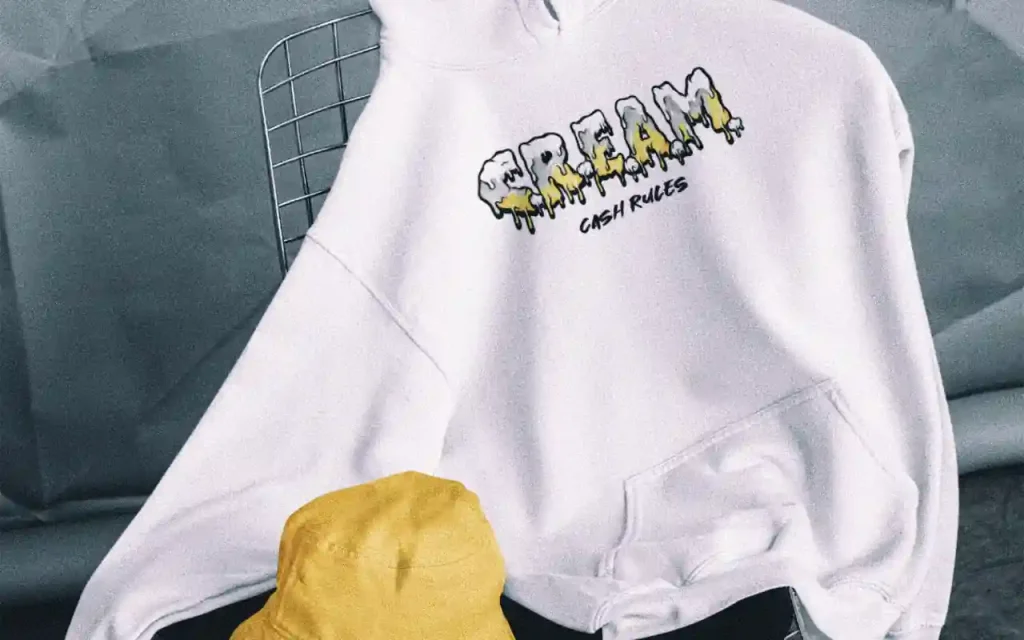
Memorable Lines, Lasting Impressions: The Power of the Quote
The 1990s produced an incredible number of rap lines that are inherently concise, instantly memorable, and packed with profound meaning. These qualities make them exceptionally well-suited as 90s hip-hop quotes for apparel. They are often short enough to fit elegantly on a shirt while still delivering a powerful, recognizable message.
These phrases serve as powerful cultural touchstones, instantly recognizable to those who grew up with the music or deeply appreciate the era’s impact. They often function as “inside jokes” or signals of shared cultural knowledge, fostering a strong sense of community and belonging among wearers. Understanding the slang, metaphors, and specific references embedded within these lyrics is key to fully appreciating their “layers” of meaning.
Many 90s rap lyrics are rich with specific slang, cultural references, and “layers” of meaning that require a certain level of cultural awareness or background knowledge to fully grasp. These phrases are often described as “inside jokes” within the community. When someone wears a t-shirt adorned with such a lyric, it functions as a “cultural password” or a subtle signal. Those “in the know” immediately recognize the reference, understand its context, and appreciate its deeper implications, creating an instant bond or shared understanding. This goes beyond a simple fashion choice; it signifies belonging to a specific cultural tribe or subculture that shares a common appreciation for the nuances and history of hip-hop. The intertextuality, layered meaning, and use of specific cultural lexicon within 90s rap lyrics transforms simple phrases into powerful cultural identifiers. This deepens the wearer’s connection to the apparel and the brand, as it signifies a shared appreciation for the intricacies of hip-hop, thereby driving stronger brand loyalty, repeat purchases, and fostering a sense of community around Trimnest’s rap lyrics on t-shirts.
Here are some examples of iconic 90s rap lines that resonate as powerful statements on apparel:
| Lyric/Phrase (Non-Attributed) | Core Message/Theme | Appeal for Apparel |
| “Life is parallel to hell but I must maintain.” | Resilience, perseverance, inner strength | Concise, universally relatable message of overcoming adversity. |
| “How you gonna win when you ain’t right within?” | Self-reflection, authenticity, personal integrity | Thought-provoking, encourages introspection, powerful statement of personal values. |
| “It’s all good baby baby.” | Optimism, carefree attitude, positive outlook | Simple, widely recognized, conveys a relaxed and confident vibe. |
| “To all the ladies in the place with style and grace.” | Empowerment, elegance, respect | Celebratory, inclusive, appeals to a broad audience, particularly women. |
| “Ain’t nobody dope as me, I’m just so fresh so clean.” | Confidence, self-assurance, swagger | Bold, declarative, perfect for expressing personal style and confidence. |
| “Rough like Timberland Wear.” | Authenticity, durability, street credibility | Evokes a specific 90s aesthetic, signals cultural knowledge and ruggedness. |
| “Fakin’ the funk.” | Authenticity, avoiding phoniness, staying true | A classic phrase that calls out insincerity, resonates with genuine fans. |
| “Word is bond.” | Trust, promise, authenticity, agreement | A foundational phrase in hip-hop lexicon, signifying truth and reliability. |
Nostalgia and Identity: Wearing a Piece of History
The 1990s are almost universally recognized as a “golden age” for rap music, a period of unparalleled innovation, creativity, and profound cultural impact. For the target audience, particularly those aged 18-45, this era often represents a formative period in their lives. Wearing apparel from this time evokes powerful feelings of nostalgia, a desire to reconnect with their youth, or to celebrate the foundational moments of a genre they deeply love. This craving for nostalgia is a significant driver in apparel sales.
Beyond just a throwback, wearing rap lyrics on t-shirts from the 90s allows individuals to actively express their connection to a pivotal cultural movement that shaped not only music and fashion but also broader societal discussions. It’s a tangible way to celebrate the pioneers who “established rap as a significant and respected genre” and “defined the aesthetics of rap”. This apparel becomes a badge of identity, signifying an appreciation for the genre’s roots and its ongoing, undeniable influence.
While nostalgia is a strong purchasing driver, the 90s era is also consistently described as a “launching pad for the future” and its legacy continues to resonate today. This indicates more than just a longing for the past. Wearing 90s rap lyrics is not merely a backward-looking act of remembrance. Instead, it’s a powerful statement about the timelessness and continued relevance of those messages, themes, and the culture they represent. It signifies that the core issues addressed—social commentary, personal struggle, triumph, identity—are still pertinent, and the aesthetic remains fresh and influential. It’s an affirmation of a cultural lineage that continues to shape contemporary music, fashion, and social discourse. The foundational and enduring impact of 90s hip-hop elevates rap lyrics on t-shirts from simple nostalgic items to declarations of enduring cultural appreciation and a recognition of the genre’s ongoing influence. This adds a significant layer of depth to the purchasing decision, appealing to consumers who value both heritage and contemporary relevance, and who wish to actively participate in the ongoing narrative of hip-hop culture.
The genre’s profound influence on fashion has evolved from its street culture origins to high-end collaborations, illustrating how deeply intertwined music and fashion can be. This enduring impact means that 90s rap apparel is not just a fleeting trend but a timeless statement.
Explore Trimnest’s Iconic 90s Rap Lyric Apparel
At Trimnest (trimnest.com), we celebrate the enduring legacy of 90s hip-hop by transforming its most iconic lyrics into wearable art. Our collection of t-shirts and hoodies features original typographical designs that capture the essence, spirit, and profound messages of the era, allowing you to express your connection to this golden age of rap. Each piece is a tribute to the culture, designed for true hip-hop enthusiasts and culture-conscious consumers.
Discover some of our standout designs:
- “I Like Big Butts and I Cannot Lie” T-Shirt: This iconic phrase captures the playful and confident spirit of 90s hip-hop, making it a fun way to express appreciation for the era’s memorable anthems.
- “Ain’t No Such Thing As Halfway Crooks” T-Shirt: A powerful statement of commitment and authenticity, this design embodies the raw, no-compromise ethos often found in classic 90s rap.
- “Back That Azz Up” T-Shirt: This phrase is synonymous with the energetic and celebratory side of 90s hip-hop, perfect for those who love to embrace the genre’s vibrant party anthems.
- “Only God Can Judge Me” T-Shirt: Reflecting themes of resilience and personal conviction, this profound lyric speaks to the introspective and defiant spirit prevalent in much of 90s rap.
- “I Love It When You Call Me Big Poppa” T-Shirt: An instantly recognizable line that exudes confidence and charm, this design pays homage to the smooth, charismatic style of 90s rap legends.
Express Yourself: The Legacy Lives On
The compelling synergy between 90s rap lyrics and t-shirt designs is undeniable. This era’s profound lyrical depth, its seamless integration with iconic fashion trends, the artistic power of typographical rap designs, the instant recognition and cultural weight of memorable quotes, and the strong pull of nostalgia and identity all converge to make these garments more than just clothing – they are wearable statements. They allow individuals to carry a piece of hip-hop’s “Golden Age” with them, expressing their connection to a powerful cultural movement that continues to shape the world.
Trimnest is dedicated to capturing this unique cultural synergy. The brand meticulously crafts original designs that respect the legacy of 90s hip-hop, ensuring each piece is a high-quality, authentic expression of your passion. Ready to wear your vibe and let your style speak volumes? Shop Trimnest’s full range of hip-hop inspired apparel today. Find the perfect piece that resonates with your soul and celebrates the enduring legacy of 90s rap.
FAQ
The 90s are considered the “golden age” of rap, offering a rich tapestry of lyrical themes—from raw storytelling and social commentary to expressions of luxury and empowerment. These lyrics are concise, impactful, and deeply resonant, tapping into both strong nostalgic feelings and a desire for authentic self-expression.
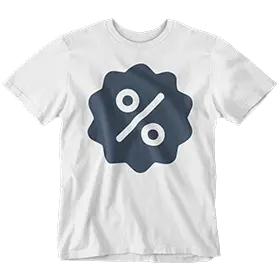
Get Exclusive Deals and Updates!
TTFVK8EW


